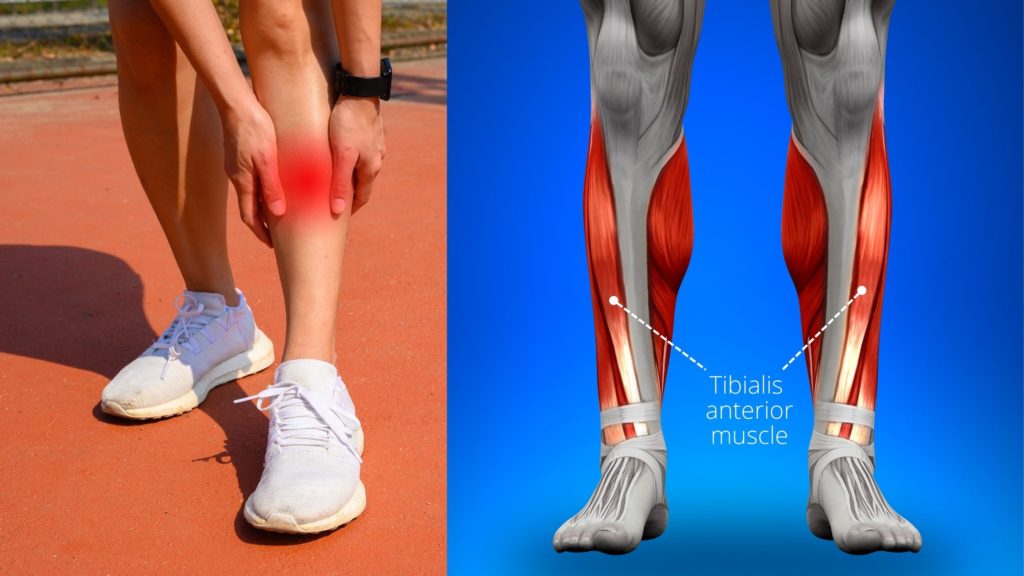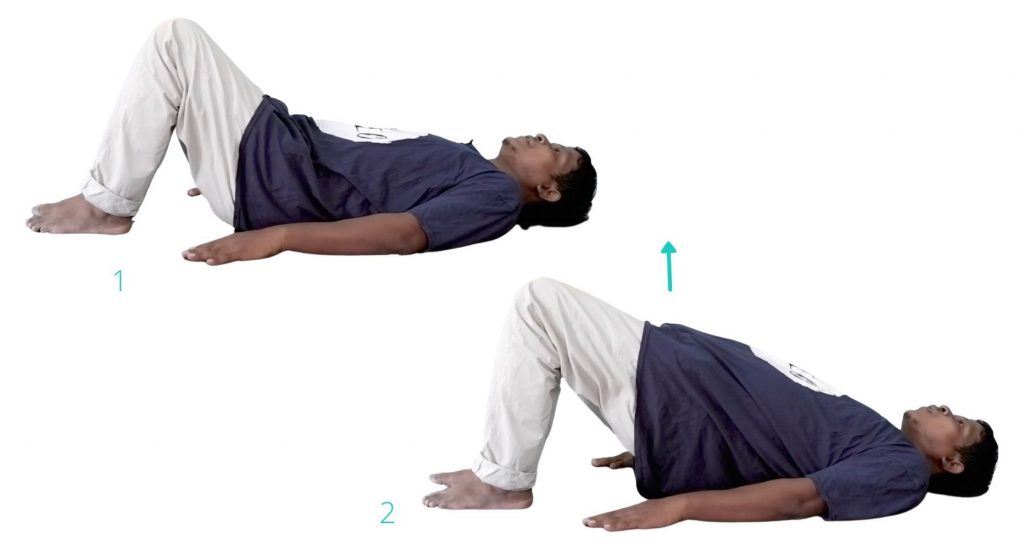Last updated on March 7th, 2025 at 10:50 am
- Shin splints are a common condition that affects many individuals, especially runners and athletes.
- They are characterized by pain in the front of the lower leg, along the shin bone.
- The pain is often caused by overuse or repetitive stress on the lower leg, leading to inflammation and microtears in the muscles and connective tissue.
- Shin splints can be prevented and treated through rest, stretching, and strengthening exercises.
If you are experiencing pain in the front of your lower leg, it is likely that you have shin splint pain. This is a common issue among athletes and those who engage in activities that involve frequent running and jumping.
However, by performing simple stretches, you can get almost immediate relief from shin pain.
In this article, we will discuss effective stretches for treating shin pain, as well as strengthening exercises and other useful tips to help you cure it completely.
Shin splint stretching exercises
Shin pain is a common problem among athletes, with sufferers often experiencing pain in the lower front part of their leg. Symptoms typically occur during running or even while walking without any prior trauma.
The pain subsides without any physical exertion but returns when the athletes resume sports activities.

This condition is also known as medial tibial stress syndrome or shin splints. The tibialis anterior muscle, which pulls our feet up, is located in the front of our legs and is responsible for ankle dorsiflexion.
Athletes who run or jump a lot tend to use this muscle frequently, leading to pain in these muscles. Stretching exercises are highly effective in alleviating this pain.
#1 Vajrasana, an effective shin splints stretching exercise

The first exercise in the list of shin splint stretches is an asana of Yoga, which we call Vajrasana. You all may know this asana.
- For this asana, you must first sit on your leg and knee bent. Please pay attention to my ankle; it’s not bent, and I haven’t pushed it to extend it all the way. I’ve extended my ankle and sat over my leg (first pose of image).
- It would help if you sat comfortably on it to feel a comfortable stretch in the muscles in front of the leg, the Tibialis Anterior.
- Maintain this position for at least 30 seconds, and then you will be relaxed.
- It’s a very effective exercise, and you should repeat the same process at least 2 3 times in a session.
#2 Easy stretching of tibialis anterior
But sometimes, the spin split sufferer may also have knee pain; they may be unable to perform vajrasana due to knee pain. So for this, we can do stretching by slightly modifying the vajarasana (2nd pose in the above image).
You get into the position as shown in the figure. Your body weight should be on the legs, and maintain your foot in this position; you will feel slightly stretched.
You won’t feel as much of a stretch as the first asana, but with this modification, you can do this exercise this way. This will help you a lot in stretching the muscles.
#3 Calf muscle stretching

The next exercise is a stretching exercise for our calf muscles. Currently, these muscles on the back of our legs are calf muscles. If you stretch these, it is quite effective in managing the pain of a shin splint.
For this exercise, you need a towel or a bedsheet.
- Take a towel or bedsheet and hold the two ends with both hands.
- Now, keep the mid-folded part on the foot, on the ball of the toes.
- Now, pull the towel towards yourself and allow the ankle to dorsiflex passively. You don’t have to bend your ankle actively; pull it with the help of this bedsheet. While doing so, note that you don’t have to bend your knee. Pull it to a point where you will feel a nice stretch in your calf muscles.
- Hold this position for at least 30 seconds, then relax it.
- Please do it again; it stretches behind, stretches it and then relaxes it.
- Do this stretching exercise at least 2 to 3 times in a session.
For other calf muscle stretching, please refer to this article 2 Stretching Exercise for Calf Muscle.
#4 Claf muscle-strengthening exercise for shin splint using a resistance band

The next exercise is a strengthening exercise for which you will need a resistance band. This will strengthen your calf muscles. A resistance band is made of latex-free rubber.
- So, for this exercise, hold the two ends of the band with both of your hands.
- Now, keep the middle part of this band on the ball of your toes. Don’t place it too low; if it’s low, it won’t be effective. Don’t place it too high so it comes off; place it exactly on the ball of toes.
- In this position, keep your ankle neutral (do not bend it) and pull the band slightly to keep it stretched and hold it in this position.
- Now, slowly bend your ankle forward, away from yourself, against the band’s resistance. Then, slowly bring it back to its normal position.
- Again, push it this way and bring it to the normal position.
- Do this at least 10 to 15 times or 20 times, and if you feel you have to use more power when you do it, you can loosen it slightly and repeat it this way.
#5 Tibialis anterior strengthening

Our next exercise for shin splint pain is tibialis anterior pain. The Tibialis Anterior muscle is present in front of the lower leg. For this exercise, you need a resistance band.
- One end of the resistance band is tied to the foot around the ball of toes.
- Then, anchor the band before a table or chair and hold the other end with your hand.
- Now, pull the resistance band slightly to make it stretched and firm.
- In this position, pull your foot towards yourself against the band’s resistance. Hold the position for 5 seconds and then relax.
- Repeat this 15 to 20 times in a session.
- A superior band product for resistance training and rehabilitation, provides both positive and negative force on muscles…
- Improves strength, range of motion and flexibility in a simple to use, portable product that works in the clinic, the gy…
- Color-coded Progressive Resistance system allows users to recognize improvement as it happens, as you grow stronger you …

Also read: 4 Tips for Faster Muscle Recovery After Workout
#6 Self-massage
Ice massage is a convenient way for athletes to ice the painful areas caused by Medial tibial stress syndrome. To make an ice cup, fill a paper cup with water and allow it to freeze. Remove the top two-thirds of the cup, leaving at least 1 inch on the bottom of the cup to act as a handle.
Apply the ice massage to the painful area using overlapping circular or longitudinal strokes.
The ice massage should be continued until the skin is numb to fine touch. The numbness usually occurs between 7 and 10 minutes. The ice massage can be repeated several times a day2.
How to prevent shin splint pain?
The best way to prevent this kind of pain is to warm up yourself before any aggressive sports. The warm-up enhances the blood flow to the working muscles and enhances the conduction of nerve impulses2. There are other benefits, and if you are an athlete, you must know the importance of warm-up and cool down in sports.
It is also important to stretch your hamstring muscle and the calf muscle to prevent this pain.
Keep Reading: Muscle pain after workout: Causes, remedies
Frequently Asked Questions (FAQ) on Shin Splints
The author is a physiotherapist who has been practising for the last 17 years. He holds a Bachelor's in Physiotherapy (BPT) from SVNIRTAR (Swami Vivekananda National Institute of Rehabilitation and Research), one of the prestigious physiotherapy schools in India.
Whatever he learns dealing with his patient, he shares it with the world through blogs and e-books. He also owns a YouTube channel, "Sunit Physiotherapist" with over 8 lakh active subscribers. Here, he shares everything he gets to learn serving the patient.







Pingback: 2 Stretching Exercise for Calf Muscle Pain Relief Instantly - Physiosunit